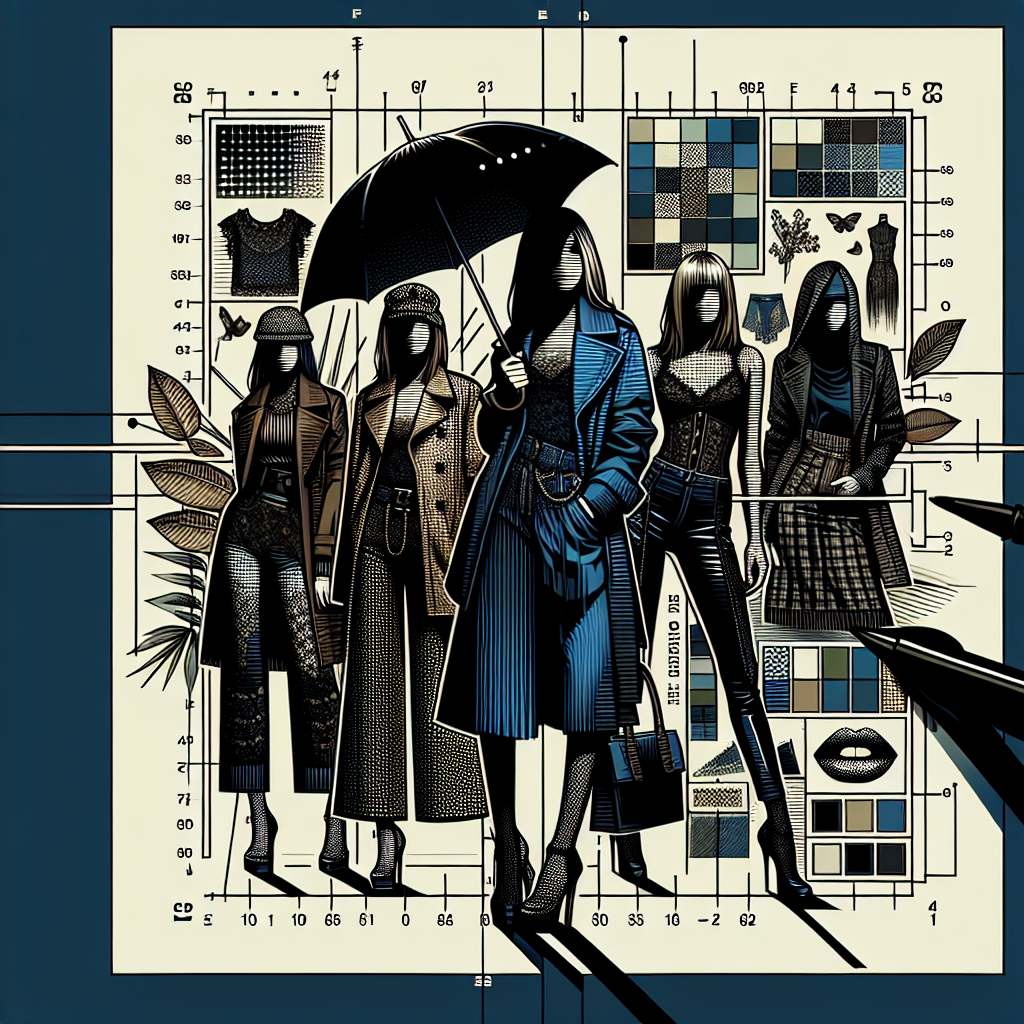Unleashing Dexter (2006) Style: How the Killer Fashion Sense Defines the Series’ Dark Charisma
The year 2006 marked the television debut of "Dexter," a groundbreaking series centered around Dexter Morgan, a blood spatter analyst by day and a vigilante serial killer by night. While the show received acclaim for its riveting storyline and complex characters, an understated yet significant aspect of its success lies in its fashion. Referred to as "Unleashing Dexter Style," the fashion choices within the series weave an integral narrative thread, building the show’s dark charisma and leaving an indelible mark on the landscape of fashion history.
Significance in Fashion History
Dexter’s wardrobe, described as utilitarian chic, occupies a unique space in fashion history, juxtaposed against the traditionally glamorous and ostentatious styles often seen on television. It encapsulates an era where the antihero archetype began to be more pronounced in popular culture, influencing fashion dynamics. Through its minimalism and functionality, Dexter’s style departs from conventional fashion narratives and instead presents a sartorial lexicon that is both practical and symbolic.
Main Themes, Styles, and Cultural Influences
Functionality and Utility
Dexter’s primary wardrobe consists of simple, utilitarian clothing: plain t-shirts, henley tops, cargo pants, and rubber gloves. Each piece serves a purpose, much like his carefully calculated actions. The color palette is generally subdued – greys, blacks, browns, and muted greens – creating an aura of anonymity that he cherishes in his dual life. This wardrobe underscores the theme of duality and masks within the narrative, reflecting Dexter’s chameleon-like ability to blend into mundane surroundings while concealing his dark activities.
Example: Dexter’s Kill Outfit
A quintessential example of this utilitarianism is Dexter’s "kill outfit": a long-sleeved henley, cargo pants, and leather apron combined with black gloves and boot covers. This ensemble, often revealed during climactic moments, highlights his clinical methodical nature and the stark contrast between his facade and his true actions. It speaks volumes about the silent efficiency of his character, offering a chilling visual parallel to his meticulous approach to murder.
Contrast and Concealment
On various occasions, Dexter adopts more put-together looks – button-up shirts and tailored jackets – blending into his work environment at the Miami Metro Police Department. This aspect of his wardrobe serves to humanize him, portraying the relatable, everyman image he needs to maintain his cover. These moments of sartorial sophistication imbue his character with a facade of normalcy, amplifying the narrative tension between his two worlds.
Example: Daytime Attire
The simple, pastel-hued button-down shirts and khakis Dexter dons during his workday exude an air of casual professionalism. Through these attire choices, the fashion designers underscore the striking duality between Dexter’s seemingly harmless daytime persona and his malevolent nighttime activities. This dichotomy establishes a tension felt viscerally by the audience, who are privy to his hidden world.
Cultural and Social Contexts
“Dexter” emerged at a time when gritty realism began to dominate television, marking a pivot away from idealized, polished characters to ones imbued with moral complexity and darkness. The fashion in "Dexter" mirrors this cultural shift, embedding the essence of urban reality into its sartorial choices.
Influence of Miami’s Aesthetic
The setting of the series, Miami, with its vibrant, tropical environment, also influences Dexter’s style. The contrast between the city’s ostentatious, sun-soaked vibrancy and Dexter’s muted, shadowy wardrobe creates a compelling juxtaposition. While characters around him often wear bright colors and flashy accessories, Dexter’s understated gear serves as a visual representation of his internal and external conflict.
Example: Miami Metro Police Department
In the brightly colored and bustling Miami Metro Police Department, Dexter often stands out, or rather slips into the background, with his neutral, simple styles. His wardrobe’s lack of conspicuousness amidst the others’ vibrant fashion subtly underscores his innate detachment from his surroundings and the people in his life. This visual storytelling through clothing enhances our understanding of Dexter’s psyche and his carefully maintained emotional distance.
Legacy and Lasting Influence
"Unleashing Dexter Style" has left a notable legacy in fashion, impacting both the realm of television and broader cultural fashion trends. The show popularized an aesthetic that married functionality with dark charisma, setting a precedent for characters in future series to adopt a similarly utilitarian yet stylish approach. Shows like "Breaking Bad" and "True Detective" followed suit, bringing authentically minimalist and practical wardrobe choices to the forefront.
Furthermore, the cultural phenomenon of "Dexter" led to an embrace of the antihero’s aesthetic in everyday fashion. The subdued, practical ensemble became iconic, influencing men’s casual wear trends towards more minimalist, functional styles synonymous with urban survivalism. Brands began catering to a growing demand for clothing that combined effortless style with practical functionality, mirroring the duality Dexter so effectively embodies.
Reflective Takeaways
As we reflect on the fashion trends spawned by "Dexter," several questions arise. How do the wardrobes of our favorite antiheroes influence our understanding and sympathy towards them? What does Dexter’s style reveal about our cultural fascination with darkness cloaked in normalcy? And perhaps most critically, how can fashion continue to tell complex narrative stories within its seams and stitches?
"Unleashing Dexter Style" remains relevant today, not merely as a nostalgic nod to a television classic but as a paradigm for how sartorial choices can evoke deep psychological and emotional landscapes. As fashion continues to evolve, Dexter’s wardrobe serves as a testament to the power of simplicity and functionality in constructing complex, multi-faceted character narratives. Whether in popular culture or the broader fashion industry, the legacy of Dexter’s style endures as a symbol of the dark charisma that captivates the human psyche.
Got more questions? Our personalized Fashion Explorer AI assistant is here to help. Click here to start a conversation!
[Advertisement]
Wondering how fashion reflects deeper values? Discover how ANY trend or style relates to positive biblical principles with Fashion and Scripture GPT from BGodInspired.com. Click here to see fashion in a new light!
[Advertisement]

